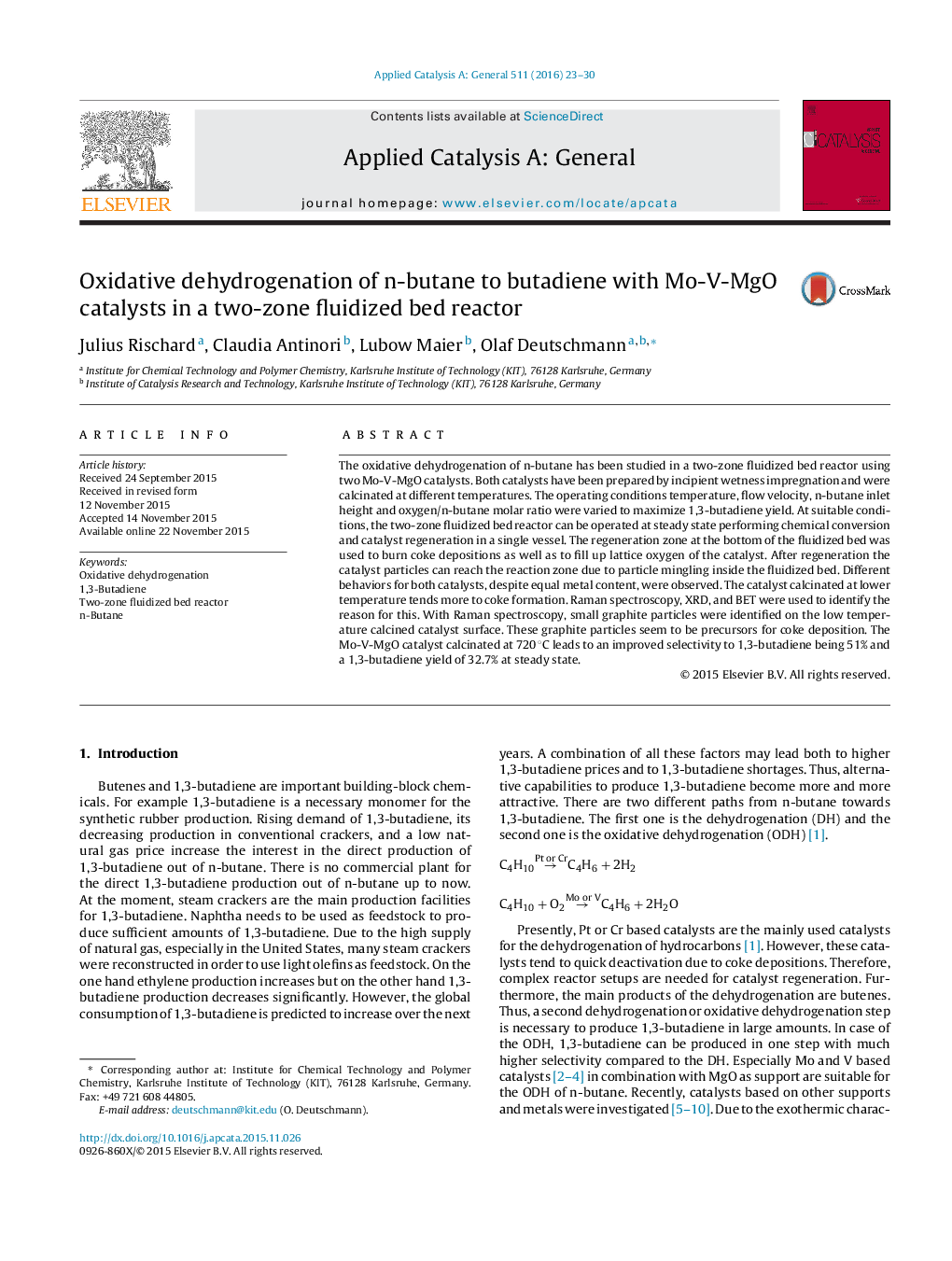| Article ID | Journal | Published Year | Pages | File Type |
|---|---|---|---|---|
| 38970 | Applied Catalysis A: General | 2016 | 8 Pages |
•High yields of 1,3-butadiene from n-butane produced over Mo-V-MgO catalysts.•Direct oxydehydrogenation and catalyst regeneration integrated in one vessel.•Optimization of inlet position in two-zone fluid bed reactor.•Calcination temperature affects catalyst performance.
The oxidative dehydrogenation of n-butane has been studied in a two-zone fluidized bed reactor using two Mo-V-MgO catalysts. Both catalysts have been prepared by incipient wetness impregnation and were calcinated at different temperatures. The operating conditions temperature, flow velocity, n-butane inlet height and oxygen/n-butane molar ratio were varied to maximize 1,3-butadiene yield. At suitable conditions, the two-zone fluidized bed reactor can be operated at steady state performing chemical conversion and catalyst regeneration in a single vessel. The regeneration zone at the bottom of the fluidized bed was used to burn coke depositions as well as to fill up lattice oxygen of the catalyst. After regeneration the catalyst particles can reach the reaction zone due to particle mingling inside the fluidized bed. Different behaviors for both catalysts, despite equal metal content, were observed. The catalyst calcinated at lower temperature tends more to coke formation. Raman spectroscopy, XRD, and BET were used to identify the reason for this. With Raman spectroscopy, small graphite particles were identified on the low temperature calcined catalyst surface. These graphite particles seem to be precursors for coke deposition. The Mo-V-MgO catalyst calcinated at 720 °C leads to an improved selectivity to 1,3-butadiene being 51% and a 1,3-butadiene yield of 32.7% at steady state.
Graphical abstractFigure optionsDownload full-size imageDownload high-quality image (95 K)Download as PowerPoint slide
